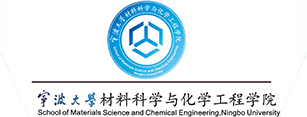报告时间:2013年12月23日(星期一)14:05-14:45
报告地点:龙赛理科楼南楼202报告厅
报告人:楼雄文博士
报告人简介:
David Lou received his B.Eng. (1st class honors) (2002) and M.Eng. (2004) degrees from the National University of Singapore. He obtained his Ph.D. degree in chemical engineering from Cornell University in 2008. For his excellent PhD thesis work, he was awarded the Austin Hooey Prize and the Liu Memorial Award. Right after graduation, he joined Nanyang Technological University (NTU) as an Assistant Professor. He was promoted to Associate Professor since September 2013. As the lead author, he has published over 150 papers in good journals, including about 45 papers in Angewandte Chemie-International Edition, Journal of the American Chemical Society, and Advanced Materials. His papers have been cited over 8500 times according to ISI web of science with an H-index of 51. He also holds several patents in nanostructured electrode materials for high-performance lithium-ion batteries. He won the TR35@Singapore 2012 by MIT Technology Review. Recently, he also won the prestigious Young Scientist Award 2012 by Singapore National Academy of Science, and the Nanyang Award 2012 for research excellence by NTU. Most recently, he won the World Cultural Council (WCC) special recognition award, and the IUPAC-Prof. Jiang Novel Materials Youth Prize. He is currently an Associate Editor for Journal of Materials Chemistry A.
报告摘要:
Metal oxides are suggested as promising electrode materials for lithium-ion batteries (LIBs) and supercapacitors. We have employed hydrothermal/solvothermal methods to synthesize a wide range of new metal oxide based nanomaterials, and investigated their potential applications as electrode materials for LIBs and supercapacitors. In this talk, I will briefly discuss three types of metal oxides based on three different lithium storage mechanisms. (i) Specifically, we have synthesized hollow SnO2 nanostructures by both templating and template-free methods, and further engineered them into SnO2-carbon composite hollow structures to achieve significantly improved lithium storage properties. (ii) We also try to improve the lithium insertion properties of TiO2 by engineering the crystal facets in view of the fact that lithium insertion in TiO2 is anisotropic. In particular, anatase TiO2 in the form of nanosheet with exposed (001) facets is an ideal host structure for this purpose. (iii) We have also demonstrated the concept for conversion reaction compounds (e.g., Fe2O3) showing that the cycling performance can be improved by creating a porous/hollow structure. Lastly, I will briefly talk about some of our most recent works about mixed metal oxide materials for LIBs and supercapacitors.
欢迎广大师生踊跃参加!

